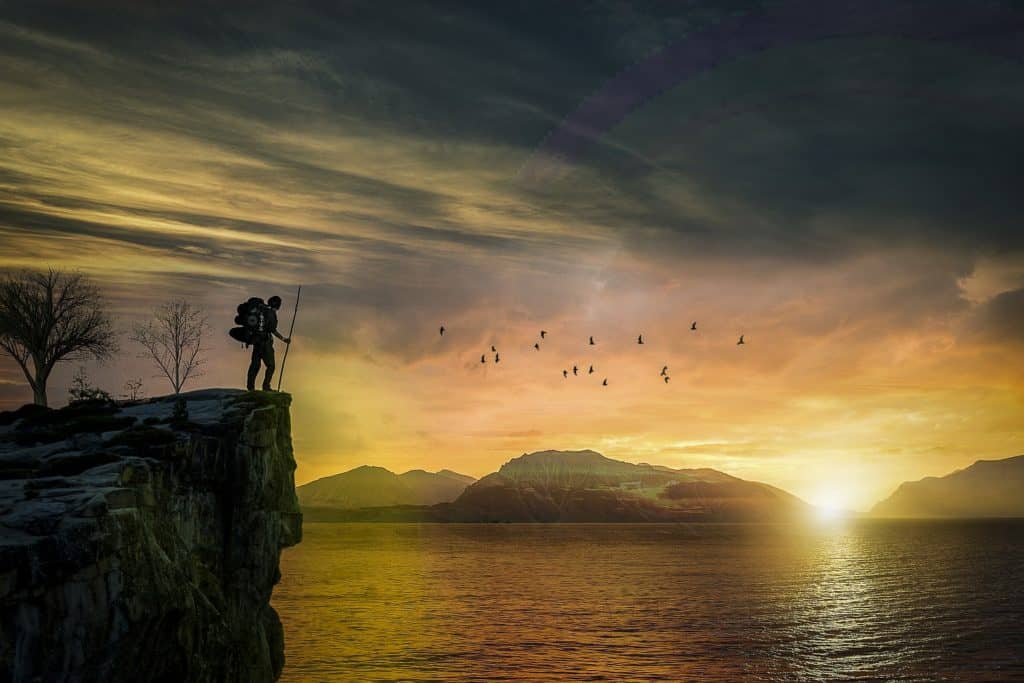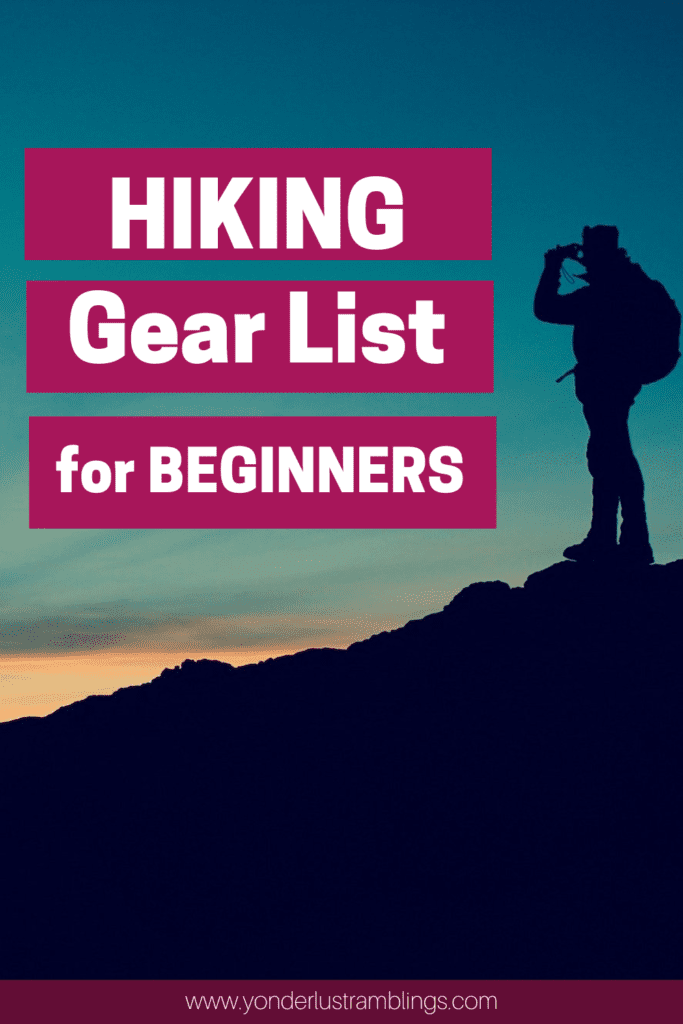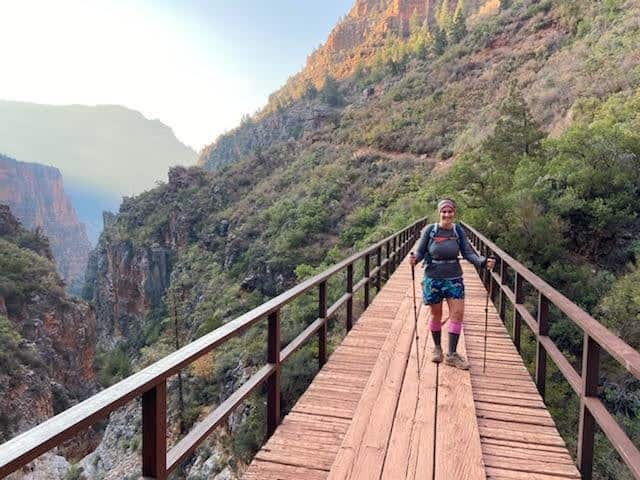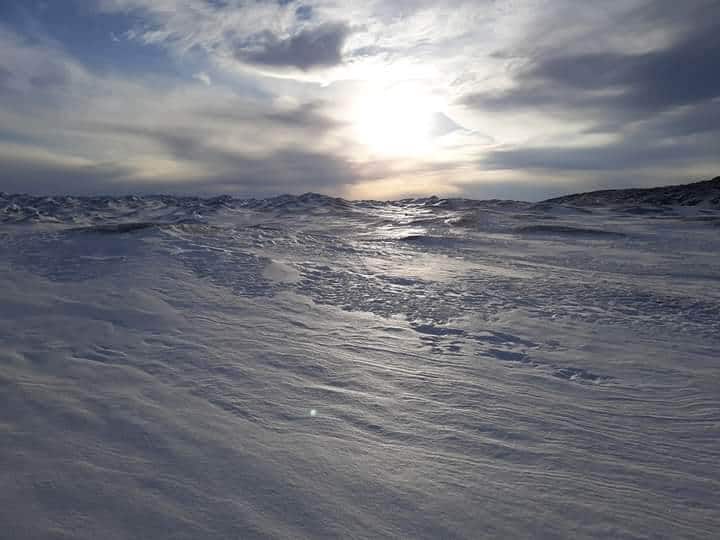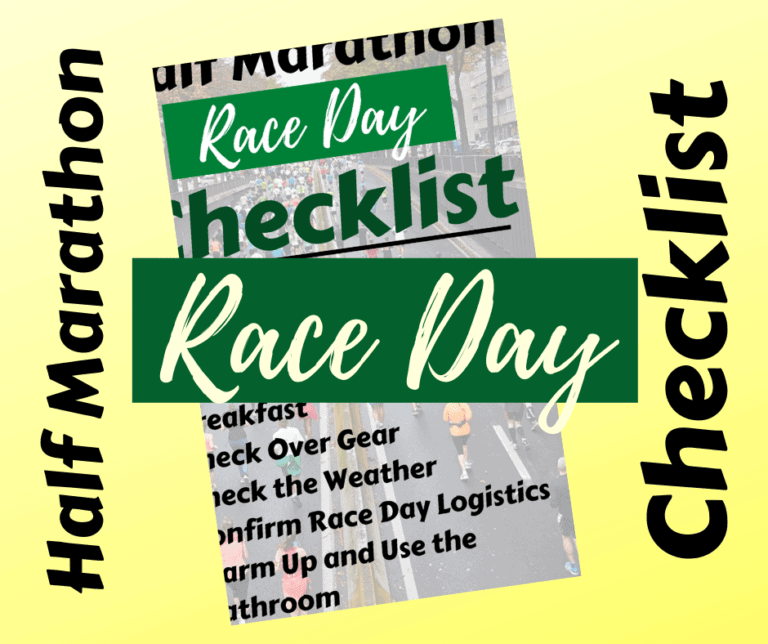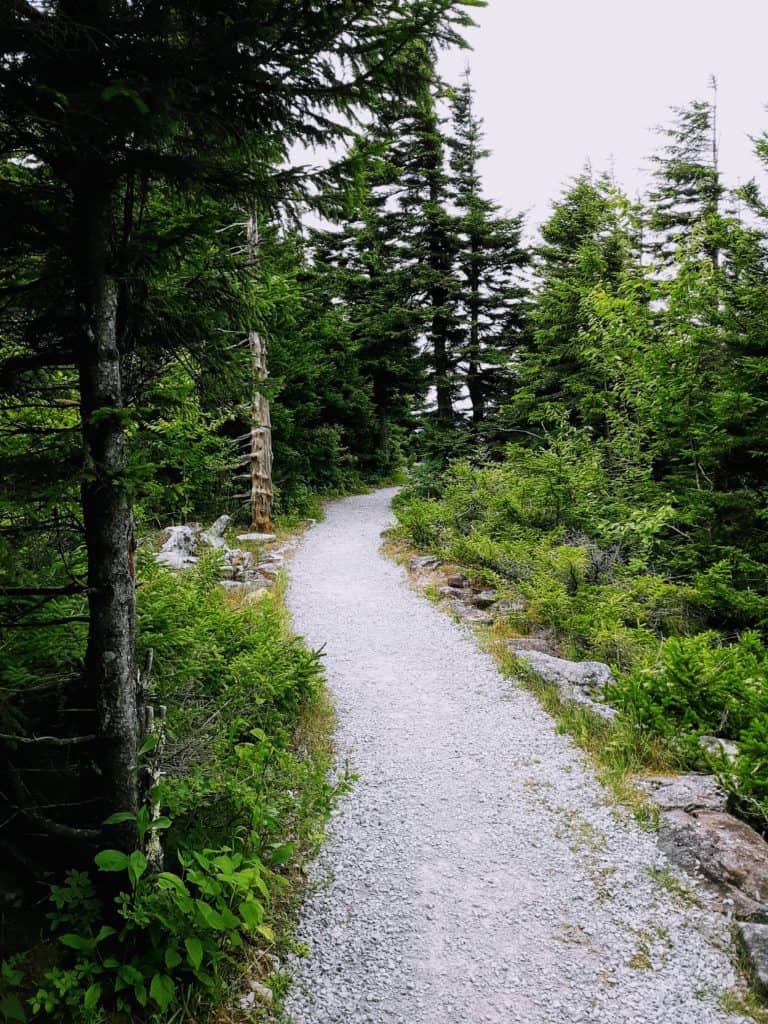New to Hiking? Here’s Your Hiking Gear List for Beginners
It can be overwhelming to be a beginner hiker, and that is often what inhibits those with a curiosity for the outdoors from reaching further. What are the essentials of a hiking gear list for beginners? What do you absolutely have to have, and what are extras? Where can you buy everything you need and how can you get organized? And why are all these items necessary? Let this hiking gear list for beginners take the guesswork out of assembling your inventory, and also give you the confidence to explore any trail safely and responsibly! Everything you need is right here in one place!
Disclosure: Below are some affiliate links-these are all products I highly recommend. I won’t make any recommendations on this page that I haven’t tested or personally used!
***Disclaimer: this post is a guide to day hiking gear ONLY! If you are planning an overnight or multi day backpacking trip, you will need additional gear, such as shelter items. Check out my sister post on all the backpacking essentials you need!
Download your own Backpacking Gear Checklist HERE!
Below are the Quick Links to all the items you will need for your day pack! Keep reading for an in depth look into exactly what makes up the 10 categories of hiking essentials, why each category is important, and the role that each hiking gear item plays. Also, I will distinguish in more detail which items are absolute necessities, and which are extras.
Table of Contents
Recommended Hiking Gear for Beginners
Quick Links:
- Day Pack – like this 20 liter Camelbak Helena Day Pack that is water bladder compatible (day hiking packs usually run in the range of 15-40 liters. If you are backpacking, you will want to look in the range of 45+ ish liters).
- Breathable Air Mesh: For lightweight comfort and air flow.
- ADVANCED WATER FILTRATION. Protects against, microplastics, chlorine, organic chemical matter and sand, dirt, cloudiness and more; improves taste
- Removes Bacteria & Parasites: The Microfiltration Membrane Removes 99.999999% Of Waterborne Bacteria (Including E. Coli And Salmonella), And 99.999% Of Waterborne Parasites (Including Giardia And Cryptosporidium)
- Water Purification Tablets (if preferred)
- One Bottle Of 50 Potable Aqua Water Purification Tablets And One Bottle Of 50 Potable Aqua Pa Plus Tables
- Premium taste-free, leak-proof reservoir with fast flow rate offers hydration on the go for hikers, backpackers, travelers and mountain bikers
- Hat
- Headlamp – love my Biolite No Bounce Headlamp!
- The ultrathin 3D molded housing sits flat on your forehead. That means no bounce, no slip. By integrating our electronics into the fabric, we pack all your lighting into an ultra-thin facing that is designed to fit as seamlessly as a contact lens.
- Hard Copy Map (if possible)
- Solar Powered Portable Battery – not just for taking pictures, but providing your phone extra juice in the event of an emergency
- Fully charged cellphone
- ID
- Premium Cork Grip With Updated Soft-Rubber Grip Extension And Solution Strap For Better Handling And Security
- Pocketed Shorts (love these for warm weather hiking with extra pocket space!)
- Anti Blister Performance Socks (2 pairs) – always have a backup in case of wet feet
- Buff and/or Smartwool Beanie – weather dependent
- Waterproof Gloves – weather dependant
- Hiking Boots or Trail Runners – terrain and preference dependent
- Crampons – weather and terrain dependent
- Gaiters – terrain dependent
- First Aid Kit (including pain relievers)
- Cooling Towel – weather dependent
- Bear Spray (if necessary in bear territory)
- Gear Aid (for repairs)
- Fire Starter / Firestarter Squares / Match Kit – you may not be planning to need fire on your day hike, but it is always a good idea to plan for the worst case scenario. These two items are small and lightweight and easy to include in your day pack, in the event of an emergency. (Travel sized Vaseline and Cotton Balls also work as a cheap alternative).
- 🔥 Survival Spark Kit: In the wilderness, having reliable survival gear that ensure survival becomes paramount. That's where SharpSurvival steps in with the survival spark fire starters kit. Crafted to confront the challenges of outdoors, our fire starter survival tool kit includes a magnesium fire starter stick alongside a striker, compass, and whistle.
- Food – see below for all my recommended day hiking foods
- Waste Bag (WAG Bag) – remember Leave No Trace
- GO ON THE GO – Make an easy-to-clean camping bathroom setup with Green Elephant’s potty bags for portable toilet, whether you’re camping, on long car trips or tailgating
- DIMENSIONS: 6.8” H x 2.4” W x 0.8" D and weighs 0.64 oz
>>>Click Here to get this Hiking Gear List for Beginners as a handy downloadable checklist!
Hiking Gear List for Beginners:
the 10 Hiking Essentials
When we talk about the 10 hiking essentials, we aren’t just talking about 10 items, we are talking about 10 categories. Each category plays a vital role in the safety and well being of any hiker. Let’s take a look at each one;
10 Hiking Essentials Categories:
- Pack
- Hydration
- Environmental Protection
- Navigation
- Shelter
- Clothing
- Emergency / Personal Items
- Fix Its (Repair)
- Fire
- Food
Hiking Gear List for Beginners:
The Essentials
Here are your absolute must haves that serve as the foundation for your hiking gear list for beginners:
#1: Day Pack
An absolute must. No small drawstring bags for you. Invest in a good quality day pack that has room for all your gear, is comfortable, and is water bladder compatible. If you prefer to hike with trekking poles, make sure that your day pack is compatible to carry trekking poles too. My own day hiking pack go to? The Camelbak Helena 20 day pack.
#2: Hydration
Another absolute must. Always have more water than you think you will need, especially in hot and arid environments. I never hike with less than 2 liters, even if I am only planning to be out for an hour or two. You just never know, and I have learned that the hard way! You have a couple options here, but I always prefer to use my main go to as well as a trusty backup.
My go to is this 3 liter Platypus Hydration Bladder. This model is fantastic because it has the wide mouthed opening, making it easy to fill, empty, clean, and dry (a major improvement over early models).
As far as backups go, I prefer this Lifestraw water bottle. The filter is built into the water bottle, so you can just fill the water bottle up from the source and drink immediately as it is filtered. Great for a quick emergency. Also great because in a non – emergency, you can just drink from the water bottle as normal.
Or, you can always just bring along a personal Lifestraw for emergencies. This little guy is small, lightweight, and easy to pack along, just know that it requires stopping and drinking straight from a source, so it is not the quickest or most “on the go” emergency option.
Finally, you can always bring along water purification tablets for an emergency, but this is my least preferred method due to the odd taste you can sometimes experience with these.
#3: Environmental Protection
No matter where you hike, there are always environmental elements to be aware of and to proactively prepare for, whether it is scorching sun, drizzly rain, or freezing temps. Minus the exception of a major storm, weather does not have to be a deterrent to getting outside and enjoying the outdoors. It is possible to hike safely and responsibly in all seasons, and here are a few of the basics you will need.
***Keep reading more in the “Extras” for some weather dependent gear that can help you with some of the more seasonal extremes.
Chapstick – never hike without it, great for wind, sun, and cold!
Bug Spray – nothing more annoying than being swarmed for hours on a hike
Sunscreen – not just for summer, wear it year round!
Hat – some kind of head covering is ideal for day hiking, just to protect from sun exposure. I would argue you could make an exception if you were planning to hike in thick forest cover or something similar with no direct sun exposure.
#4: Navigation
Navigation has come a long way, thanks to hiking apps and downloadable, offline maps. But it is still important to know “how” to navigate, because there are times when technology fails and you have to rely on yourself. So always bring more than just your app, though your app is a fantastic thing to have and should not be underestimated!
Compass – and the ability to know how to use one
Topo Map – having a hard copy map, especially in wilderness, unpopulated areas, can be very handy, as long as you learn how to read one before hand. There are plenty of maps available for purchase for popular hikes on Amazon as well.
App like AllTrails – AllTrails has a lot of really handy features, like downloadable, offline apps, as well as route descriptions and reviews to help familiarize yourself with the trail before even stepping foot on it. Mental preparation is one of the best gear items you can bring along!
Solar Powered Portable Battery – I include this hiking gear list item in this category because although it is fun to have extra battery juice to take more pictures, this really can be helpful in case of an emergency, if you need to place a call, or continue being able to follow an app map like AllTrails.
Personal Emergency Beacon – these are not cheap, but they can literally be a lifeline in a major emergency, when all other forms of navigation may have failed. Just know that they require a paid subscription.
#5: Shelter
On a day hike, you likely aren’t planning to need shelter, but you should always bring along emergency shelter gear items just in case. Again, I have experienced this situation and was woefully unprepared for spending a night lost in the mountains without shelter, and now I never hike without these 3 emergency shelter hiking gear list items:
The great thing about all 3 of these items is each is small, compact, and lightweight, meaning they are easy to pack and carry, so there is no real reason to ever hike without them,
#6: Clothing
Clothing needs can vary widely depending on your weather, season, and terrain, but there are few basic things to consider when choosing your hiking clothing. Think layers, and think moisture wicking, breathable, and insulating (in colder weather). Avoid cotton. Also, always hike with a waterproof outer shell. Here are my recommendations:
Favorite Day Hiking Warm Weather Shorts
Favorite Pocketed Legging Shorts
Favorite Anti Blister Performance Socks (bring 2 pairs)
Favorite Head Covering: Buff and/or Smartwool Beanie
Favorite Ultra Lightweight Waterproof Outer Shell: Outdoor Research Helium II Jacket
I just want to spend a minute talking about how much I love this Outdoor Research Helium II outer shell jacket. It is very hard to find a fully waterproof and windproof outer shell that is also lightweight, compactible, and easy to carry. This shell does it all! Keep in mind that in colder weather, you are going to want to layer underneath, as this is not an insulated outer shell jacket. However, at only a few ounces, it is the lightest weight waterproof outer shell you will find out there. (For dead of winter hiking, you will want something that is waterproof and insulated).
Footwear:
You have footwear options as well for your day hiking gear list, depending on terrain and preference. I hike in both hiking boots and trail runners, but I choose each for different reasons.
I prefer hiking boots for trails that are less predictable and tricky with the terrain, like a loose scree field on a 14K mountain summit. The extra stability and support of a hiking boot, like these waterproof Vasque Breeze GTX boots, do the trick in those situations.
Mostly though, I prefer to hike in trail runners. Hands down the best trail runners you will find are HOKA One One Speedgoats. Just ask a group of trail runners about their experiences with HOKA Speedgoats and you will see what I mean! HOKA Speedgoats are lightweight, yet amazingly cushioned and provide great traction. I rely on them when I need to move a little faster and with efficiency, while still giving my feet the cushion they need for longer day hikes, like the Grand Canyon’s Rim to Rim hike, or the 20+ mile hike to the highest point in the lower 48 states at California’s Mt. Whitney!
The only thing to note with HOKA Speedgoats is that they are not waterproof, like a hiking boot would be.
#7: Emergency / Personal Items
These items will help you get through any emergency situations that might pop up during your hike, as well as make your hike more comfortable on a personal level.
First Aid Kit (including pain relievers)
Emergency Whistle / Signaling Mirror
Cooling Towel (weather dependent)
#8: Fix Its / Repair Items
These hiking gear list items are great in a bind, when you need to make an impromptu repair to keep going.
Multi Tool – just what it sounds like
Gear Aid – basically the upgraded Duct Tape for the outdoor adventurer, compatible of repairing gear and shelter.
#9: Fire
Just in case, it is a good idea to carry along some small and lightweight items that are capable of providing you with fire in an emergency situation. Firestarters and a match kit can go a long way, but there is also the cheap and equally lightweight option of Vaseline and cotton balls.
Firestarter – Bonus! This one comes with a compass and emergency whistle combo / Firestarter Blocks
#10: Food
In addition to hydrating consistently on your hike (even in winter), you will also equally want to fuel your body properly during your hike. Think easily digestible, compactible, high energy, and lightweight food items for your day hike. Below are a handful of my favorite tried and true go to’s.
Whatever you end up choosing for your snacks, just make sure you do not experiment with any new foods on your hike. Eat what has worked for you before.
- Sandwich – a basic meat and cheese sandwich is one of my all time hiking favorites
- Trail Mix / Nuts
- Beef Jerky
- Tuna Packets
- Applesauce Pouches
- Squeezable Peanut Butter
Read More: find out why peanut butter is one of the ultimate power fuels
- Honey Stinger Waffles
- GU Energy Gels
- Banana
- Carrots
- RX Bars
- NUUN Tablets / Electrolytes
Hiking Gear List for Beginners:
The Extras
Not absolute necessities, but often these items will improve your experience and your comfort level. For example, if you are hiking in Death Valley, you may not need a rain cover for your pack, but if you are hiking at high elevation where afternoon showers are possible, or exploring the drizzly Pacific Northwest, then you would be well off to invest in a good rain cover to keep your gear dry!
- Trekking Poles – depending on the terrain and your preference. If there are significant uphills or downhill grades, trekking poles can be great for added support. These Black Diamond trekking poles have awesome cork handles, which prevent slippage from sweaty palms like some plastic handles can.
- Headlamp – I usually would just always recommend this because you never know when a hike might run longer than you think. I love the BioLite no bounce headlamp, which is perfect for a slow hike, or the occasional faster moving, bumpier hike, or even a trail run for those active travelers out there pulling double duty as hikers and trail runners!
- Sunglasses – for extra sun or glare
- Gaiters – if your trail is extra dusty, gaiters can help to prevent dust and/or little pebbles from making their way into your footwear. Also great for those hikers that are also trail runners, like me!
- Hand Sanitizer – a little extra creature comfort for feeling clean
- Bear Spray – if you are hiking in bear country, be sure to bring along bear spray as a deterrent
- Cooling Towel – in extremely dry, hot, and arid environments, a cooling towel can be a great way to stay comfortable. This happens to be one of the gear list items I recommend for staying cool on the Rim to Rim hike in the Grand Canyon, one of the hottest hikes in the country!
Now that you know what hiking gear list for beginners items you DO need, what hiking gear do you NOT need?
- Unnecessary weight – probably the biggest no in hiking
- Nice items you don’t want getting dirty!
- Valuables like jewelry
- Cotton clothes
Besides a Complete Hiking Gear List for Beginners, What Other Tips do Hiking Newbies Need to Know?
There should really be an 11th category of hiking essentials, and it should be called Preparation. A complete gear set will only get you so far, if you have not done your part to be prepared for your hike ahead of time. Here are some things you need to bring along with you on your hike, that you can’t buy!
#1: Knowledge of Your Trail:
Research your trail ahead of time. If you are using an app like AllTrails, check out the route description before. Know where the elevation increases and decreases. Read reviews from other hikers. Get an idea of what to expect. Don’t wing a hike.
It was Mother’s Day weekend, and I was hiking with my sister as was our yearly tradition. This time, we were backpacking Guadalupe Mountains National Park, one of Texas’s 2 National Parks! After spending a relaxing night in the backcountry, we were making our descent down the Tejas Trail, a steep, full exposure, and brutally challenging trail, when we encountered two gentlemen on their way up. They stopped us to ask where the trail led, how long it was, etc. Clearly, they had done no research. They were wearing sneakers and polo shirts, and were equipped with one bottled water each. This was at approximately noon on an extremely hot day, on a 8 mile uphill trail with zero shade.
I share this to say, do your research, don’t be these guys. We were legitimately concerned for them as we parted ways, after trying our best to let them know in a kind way that they probably shouldn’t proceed any further.
#2: The Weather:
Know what the weather is going to be like on the day of your hike, and plan accordingly. In general, it is never a bad idea to start hikes early in the day. You can often avoid potential weather this way, and it also gives you more daylight hours to work out issues that might arise, like getting lost.
Hiking early also eliminates any sense of pressure to rush or finish your hike early, and allows you to fully enjoy the experience. If you are hiking in higher elevation, know that showers are frequent, and you need to have your waterproof outer shell handy. It is a good rule of thumb to always be down from high elevation by noon.
For high altitude hikes, my favorite site to check mountain weather before hand is Mountain Forecast.
#3: Share Your Plans:
Let friends and family know where you plan to hike, especially if you are hiking solo. Let them know your estimated completion time, and notify them when you have finished your hike. If there is a Ranger Station where you are hiking, and your trail takes you into some remote wilderness areas, you can always check in with the ranger station prior, or utilize trailhead registries when offered.
You can also leave a note with your intended plans, routes, and timeframes under your seat in your vehicle, to help notify emergency workers in an emergency event.
#4: Pay Attention:
Always pay attention when you are hiking, not just for your own safety, but for the safety of others. If another hiker is immobilized, your ears could be the lifeline to getting them help. Familiarize yourself with landmarks, stop and look behind you occasionally so that you will know what to look for on the way back if it is an out and back trail. Watch for obstacles, wildlife, developing weather, etc. If your gut instincts tell you to turn back for any reason, don’t ignore it.
#5: Utilize Others
If you pass other hikers on their way back, don’t hesitate to ask them about the trail ahead. Maybe they can notify you of a potential wildlife spotting, or a downed tree or swollen creek.
#6: Know Your Limits:
If you have never hiked more than 5 miles, don’t attempt a 15 mile hike on a whim. Know your limits, both physically and mentally, and if there is a particular goal you wish to achieve, work up to it! There are plenty of awesome hiking exercises you can do from anywhere, that will help prepare you for whatever trail you are after! Just be sure to be honest with yourself when preparing for your hike.
Sometimes it is easy to fall into the trap of trying to keep up with others, especially in a group. But allow yourself to be honest with them as well, and make your plans accordingly.
>>>Have your eyes set on a true hiking challenge? Find out what it takes to train for the Grand Canyon’s Rim to Rim hike!
#7: If You are New to Hiking, Start Off Slow:
Start with short, easier hikes, and work your way up. Don’t bite off more than you can chew at once. The point is to enjoy hiking, not become stressed by it.
#8: Be Humble and Respectful:
Don’t ever allow yourself to become overconfident and take unnecessary risks, or not adequately prepare. Hiking outdoors demands respect. Even if you have hiked a certain trail 10 times, does not mean something can’t go wrong on the 11th time.
#9: Leave No Trace:
Check out the 7 Leave No Trace Principles, and be sure to practice them and put them into habit on all your hikes.
#10: Have Fun!
Further Resources:
- Train from anywhere with these 6 Simple and Straightforward Hiking Exercises!
- Take your adventures to the next level with this Guide to Essential Backpacking Gear!
- Looking for a fun way to get in those hikes? Check out “highpointing”!
- What Exactly does an Out and Back Trail Mean?
- Going Solo? Follow these 7 Safety Tips for Hiking and Backpacking Alone!
- Check out these Top 5 Mistakes to AVOID as a Newbie Hiker!
- Don’t forget to grab your downloadable Day Hiking Essentials Checklist HERE!
PIN for LATER!
Last update on 2023-08-09 / Affiliate links / Images from Amazon Product Advertising API









































